Fluke 80TK Handleiding
Bekijk gratis de handleiding van Fluke 80TK (4 pagina’s), behorend tot de categorie Niet gecategoriseerd. Deze gids werd als nuttig beoordeeld door 50 mensen en kreeg gemiddeld 4.8 sterren uit 25.5 reviews. Heb je een vraag over Fluke 80TK of wil je andere gebruikers van dit product iets vragen? Stel een vraag
Pagina 1/4

PN 735985 February 1985 Rev.8, 7/07
©1985-2007 Fluke Corporation. All rights reserved. Printed in USA . All product names are trademarks of their respective companies
80TK
T
HERM
OC
OUP
LE MO
DU L
E
C
F
OFF
Introduction
The Fluke 80TK is a thermocouple converter for use with any
K-type thermocouple and a digital multimeter. The 80TK
accepts the output of any K-type thermocouple and converts it
to 1 mV per degree (Celsius or Fahrenheit).
A three-position switch acts as a power switch as well as
selecting Fahrenheit or Celsius scaling for the output. In
addition, the OFF position of the power switch allows you to
read the battery condition via the external multimeter. The
thermocouple input accepts wire leads or standard mini-
thermocouple connectors.
Temperature is measured by exposing or attaching the
thermocouple to the surface to be measured. The multimeter
displays the temperature directly in degrees Fahrenheit or
Celsius.
Specifications
Electrical
Measurement Range: -50 to 1000 degrees Celsius
-58 to 1832 degrees Fahrenheit
Resolution:
2000 count display: 0.1 °C/F in 200 mV range
1.0 °C/F in 2 V range
3200 count display: 0.1 °C/F in 300 mV range
1.0 °C/F in 3V range
4000 count display: 0.1 °C/F in 400 mV range
1.0 °C/F in 4 V range
Note: Ignore decimal point on 2 V, 3 V, or 4 V range.
Maximum Voltage at Thermocouple Input: 60 V dc, 24V ac
RF Field: Exposure to an rf field interferes significantly with this
module’s capacity to accurately measure temperature with
thermocouples. The interference is temporary and the module
suffers no harm when exposed to an rf field of 3 V/m. Accurate
temperature measurement capability is completely restored
when the module is removed from the rf field.
Common sources of rf fields are handheld 2-way radios and
cellular telephones. If such a source is suspected of interfering
with this module, either turn off the transmitter or increase the
separation between the transmitter and the module.
Environmental
Ambient Operating Range: 0 to 50 °C
Storage Temperature: -40 to 60 °C
-40 to 140 °F
Humidity: 0 % to 90 % (0 to 35 °C)
0 % to 70 % (35 to 50 °C)
Basic Accuracy: (@ 23 ±5 °C Calibration)*
(Applies for one year after purchase or recalibration)
RANGE ACCURACY ± (% of reading +
degrees), 1 year
-20 to 350 °C 0.5 % ± 2 °C
-4 to 662 °F 0.5 % ± 3.6 °F
351 to 500 °C† 1.75 % ± 2 °C
664 to 932 °F†* 1.75 % ± 3.6 °F
501 to 1000 °C 2.0 % ± 2 °C
933 to 1832 °F 2.0 % ± 3.6 °F
-50 to -21 °C 2.5 % ± 2 °C typical
-58 to -5.8 °F 2.5 % ± 3.6 °F typical
Temperature Coefficient:
* 0 °C to 18 °C and 28 °C to 50 °C ambient, multiply the basic
accuracy specification by 0.1 for each degree above 28 or
below 18.
† For accuracy enhancement between 351 °C to 500 °C,
subtract 3 degrees from the reading. The accuracy is now
0.75 % ± 2 °C.
†* For accuracy enhancement between 663 °F and 932 °F,
subtract 5.4 degrees from the reading. The accuracy is now
0.75 % ± 3.6 °F.
Note
The basic accuracy specification does not include the
error of the probe or the DMM. Please refer to the
probe accuracy specification for additional details.
General
Weight: 4.5 oz, 126 g
Overall length: 4 5/8 in, 11.75 mm
Battery: Standard 9 V Battery (NEDA #1604, 6F22, 006P)
Battery Life: 1600+ hours, 6.5 V minimum
Output: 3/4 in spaced banana plugs, 10 MΩ minimum load
resistance
Accessories
80PK-1 (included): Bead Probe 4 ft K-type thermocouple bead
probe, with Teflon tape insulation. Maximum insulation
temperature: 260 °C. Accuracy: ± 2.2 °C or ± 0.75 %
(whichever is greater) from 0 to 800 °C.
80PK-22: Immersion Probe (8.4 in or 21.3 cm from tip to probe
handle)
80PK-3A: Surface Probe (for flat or curved surfaces)
80PK-24: Air Probe (protected by stainless steel baffle)
80PK-25: Piercing Probe (suitable for food use, liquids and
gels)
80PK-26: Exposed Junction Probe (exposed bead attached to
8.5 in probe)
®
80TK Thermocouple
Module
Instruction Sheet

.
80PK-27: Industrial Surface Probe
80PK-8: Pipe Clamp Probe (For pipe diameter 1/4 in to 1 7/8
in)
80PK-9: HVAC Probe for piercing pipe insulation for pipe
temperature measurement
80PK-11: K-type Velcro Temperature Probe
80CK-M: Male Mini-Connector (for attachment of K-type
thermocouple wire)
Use and Operation
Thermocouples rely upon the difference in temperature
between the measuring junction and a reference junction.
Traditionally the reference junction is another thermocouple
placed in an ice bath, however, the 80TK uses an electronic
reference junction. The converter (80TK) must be operated in a
thermal environment consistent with its specifications.
Measuring Technique
Making accurate temperature readings using a thermocouple is
a matter of identifying and minimizing the causes of error. The
largest contributor to errors is the thermal interface between
the measurement surface and the thermocouple. The next
largest contributor is the temperature difference between the
thermocouple probe and its environment.
Here are some suggestions for improving the accuracy of your
temperature measurements. Ensure that there is a good
connection between the probe and the surface you are
measuring. You can do this in many ways:
1. Increase the mounting pressure.
2. Use an interface agent (such as silicone grease) between
the thermocouple probe and the surface you are
measuring.
3. Use a thermal epoxy to attach the thermocouple.
When measuring temperatures higher than ambient, adjust the
connection of the probe to the surface until you get the highest
temperature reading. Use any of the suggestions given above
to do so.
When measuring temperatures lower than ambient, adjust the
connection of the probe to the surface until you get the lowest
temperature reading. Use any of the suggestions given above
to do so.
When measuring temperatures near ambient, make the
reading when the multimeter display is most stable.
XWWarning
To avoid electrical shock, do not use this instrument
when voltages exceeding 30 V rms, 42.4 peak, or 60 V dc
are present. The probe tip is electrically connected to
the output terminals.
Temperature Measurement
Follow this procedure to correctly use the 80TK.
1. Plug the 80TK into the multimeter. Ensure that the red
banana plug is plugged into the voltage input and the black
banana plug is plugged into the COM input.
2. Set the multimeter to the 200, 300, or 400 millivolt range.
This setting will read temperatures equal to the number of
millivolts the range has (i.e., 320 °C or F if the millivolt
range reads 320 mV).
3. Use the dc volt setting and ignore the decimal for higher
temperatures than can be accommodated by the millivolt
range. Less resolution is available when using the volt
range.
XWWarning
To avoid electrical shock, if connecting wires to the
input screws, make sure the thermocouple is removed
from the measurement surface. Completely reassemble
the instrument before use.
4. Plug the thermocouple into the 80TK thermocouple input
connector. If the thermocouple does not have a plug
attached, connect the thermocouple wires to the
thermocouple input screws inside the 80TK. The yellow
coded wire (chromel) connects to the screw marked ”+”.
5. Turn on the 80TK and the multimeter.
6. Adjust the thermal connection between the measurement
surface and the thermocouple as described previously.
7. Read the temperature on the multimeter.
Open Thermocouple Reading
If the thermocouple probe has open circuited (i.e. is broken),
the multimeter will read a steady, constant voltage. The voltage
readings are:
Range Reading
C ≥ 1.0V
F ≥ 2.2V
Battery Condition Test
1. Set the power switch to the OFF position.
2. Connect the 80TK to the multimeter.
3. Set the multimeter to the 200, 300, or 400 millivolt dc
range.
4. Read the battery test voltage on the multimeter. A
minimum reading of 75 mV is acceptable and indicates
that approximately 100 hours of battery life remain.
Battery Replacement
XWWarning
To avoid electrical shock, remove the
thermocouple from the measurement surface, or
disconnect the thermocouple from the
instrument before opening the case. Totally
reassemble the instrument before attempting to
use it.
1. Set the power switch to the OFF position.
2. Disconnect the 80TK from the multimeter.
3. Unplug or disconnect the thermocouple.
4. Turn the 80TK so the power switch is facing down.
Remove the single screw located between the banana
plugs.
5. Grasp one case half in each hand. Pull the two halves
apart, beginning at the end with the banana plugs.
6. Remove and replace the battery.
7. Reassemble the 80TK.
8. To reassemble, mate the two case halves at the end with
the thermocouple connector, then "hinge" the two halves
together.
80TK Self Test
The following test is an easy way to verify proper operation of
the 80TK:
1. Follow the Battery Replacement Procedure to open the
case.
2. Using a short piece of bare wire, short the input
thermocouple terminals together.
3. Plug the 80TK into the multimeter.
4. Turn the multimeter and the 80TK on. Set the multimeter
to 200, 300, or 400 mV range.
5. The multimeter should read the ambient room
temperature.

80TK Calibration Procedure
A calibration cycle of 1 year is recommended to maintain the
80TK within specifications. The required equipment is listed
below. Use Calibration Procedure 1 to calibrate the 80TK for
use with any K-type thermocouple. Use Calibration Procedure
2 if the 80TK will be used exclusively with one K-type
thermocouple. Always calibrate the Celsius function before
calibrating the Fahrenheit function.
Location of Calibration Adjustments
Calibration Procedure 1.
Use this procedure to calibrate the 80TK:
1. Verify the condition of the battery as described above and
replace the battery if necessary. Follow the Battery
Replacement procedure to disassemble the 80TK, but do
not remove the battery or reassemble the 80TK.
2. Allow 80TK and the room-temperature water bath to
stabilize at room temperature, away from drafts, for at
least 30 minutes before proceeding with calibration. Place
the reference thermometer into the room temperature
water bath. Allow the reading to stabilize.
3. Use the shorting bar to short the 80TK thermocouple input
terminals.
4. Plug the 80TK into the dc volts input of the multimeter. Set
the multimeter to the 300 mV or equivalent range.
5. Set the switch on the 80TK to CELSIUS position. Adjust
R4 to half rotation, then adjust R5 until the reading on the
multimeter matches the reading on the mercury reference
thermometer ± 5.0 °C. Now adjust R4 until the two
readings are within ± 0.1 °C.
Note
If the mercury reference thermometer displays °F,
use the following conversion to get °C:
[5/9 (temp in °F)-32] = (temp in °C)
6. Set the switch on the 80TK to the FAHRENHEIT (center)
position.
7. Adjust R16 until the reading on the multimeter matches the
reading on the mercury reference thermometer ± 0.2°F.
Note
If the mercury reference thermometer displays °C,
use the following conversion to get °F:[9/5(temp in
°C) + 32] = (temp in °F)
8. Set 80TK switch to the OFF position. Remove 80TK from
multimeter and remove any connections to the 80TK
thermocouple input terminals.
9. Reassemble the 80TK.
10. The 80TK is now calibrated.
Calibration Procedure 2.
Use this procedure if the 80TK will be used exclusively with
one K-type thermocouple:
Perform Calibration Procedure 1. Substitute the following for
step 3 in Calibration Procedure 1:
3. Connect the thermocouple to the 80TK thermocouple
input, and place the thermocouple into the room
temperature bath along with the mercury reference
thermometer.
Required Equipment
Refer to Table 1 for equipment required to calibrate the 80TK.
Table 1. Required Equipment
Instrument Minimum Specification Recommended Model
Mercury Reference Thermometer 0.1 °C resolution Princo Model SAMA-CP45
Dewar Flask and Cap(water bath) 2 pint capacity, filled with water Thermos bottle
Digital Voltmeter 300 mV range, 100 μV resolution Fluke Model 87 Series V or equivalent
Shorting bar
OR
K-type thermocouple
<1 Ω
meets NBS standards(with subminiature K plug)
Wire
Fluke 80PK-1
To contact Fluke or for service, call one of the following telephone numbers:
USA: 1-888-44-FLUKE (1-888-443-5853)
Canada: 1-800-36-FLUKE (1-800-363-5853)
Europe: +31 402-675-200
Japan: +81-3-3434-0181
Singapore: +65-738-5655
Anywhere in the world: +1-425-446-5500
Or, visit Fluke's Web site at www.fluke.com.
Fluke Corporation Fluke Europe B.V.
P.O. Box 9090 P.O. Box 1186
Everett WA 98206-9090 5602 B.D. Eindhoven
USA The Netherlands
Product specificaties
| Merk: | Fluke |
| Categorie: | Niet gecategoriseerd |
| Model: | 80TK |
| Kleur van het product: | Black, Brass, Red, Yellow |
| Gewicht: | 126 g |
| Diepte: | 11.75 mm |
| Temperatuur bij opslag: | -40 - 60 °C |
| Bereik temperatuurmeting: | -50 - 1000 °C |
| Levensduur batterij: | 1600 uur |
| Bedrijfstemperatuur (T-T): | 0 - 50 °C |
| Relatieve vochtigheid in bedrijf (V-V): | 0 - 90 procent |
| Type batterij: | 9V |
| Temperature measurement range: | -58 - 1832 °F |
| Nauwkeurigheid van de temperatuur: | 2 °C |
| Output interface: | Banana plug |
| Type thermokoppel: | Type K |
Heb je hulp nodig?
Als je hulp nodig hebt met Fluke 80TK stel dan hieronder een vraag en andere gebruikers zullen je antwoorden
Handleiding Niet gecategoriseerd Fluke
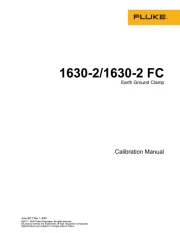
26 Augustus 2025
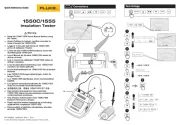
15 Juni 2025
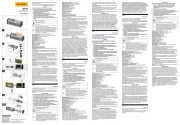
10 Juni 2025

11 Maart 2025
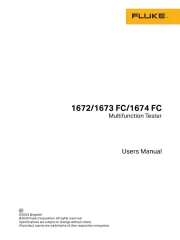
7 Oktober 2024

7 Oktober 2024
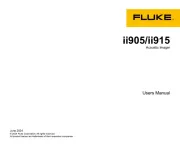
7 Oktober 2024

9 September 2024

8 Juli 2024

7 December 2023
Handleiding Niet gecategoriseerd
- GUS
- MRP
- Pinolino
- Alpen
- American BioTech Supply
- Marantz
- Promate
- Livall
- Vivo
- Zennio
- Opkon
- E-ast
- Teesa
- DAP Audio
- KlikaanKlikuit
Nieuwste handleidingen voor Niet gecategoriseerd
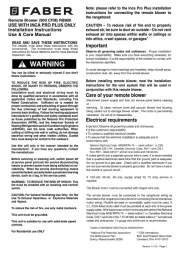
5 September 2025
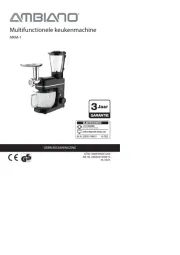
5 September 2025
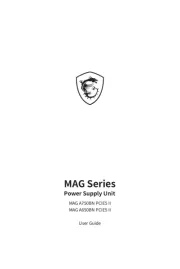
5 September 2025

5 September 2025
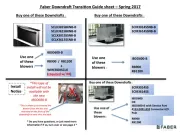
5 September 2025
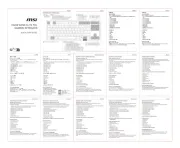
4 September 2025
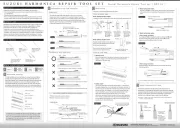
4 September 2025
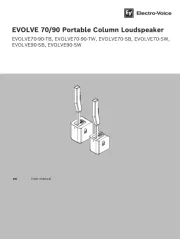
4 September 2025

4 September 2025
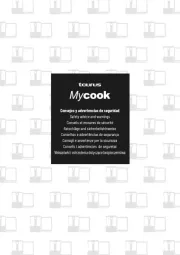
4 September 2025